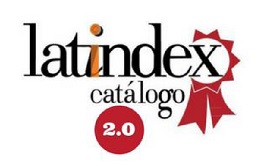Analysis of self-generated intangibles and their accounting recognition
DOI:
https://doi.org/10.53641/junta.v5i1.84Keywords:
self-generated intangibles, measurement, disclosure, value creationAbstract
Self-generated intangibles are new creators of business value and they are currently sources of competitive advantage. The financial statements do not disclose information directly on this type of intangible, which generates asymmetries between the book value of an entity, and the perception of its value according to the market. Given this situation, this scientific research aims to analyze whether the information about self-generated intangibles, based on the creation of value for an organization, can be, better recognized in the information that an entity communicates to its stakeholders. The methodology used consisted of the review of the existing conceptual framework in relation to self-generated assets, the critical review of different doctrinal positions in this regard, and the proposal of an approach to an accounting model that provides reasonable information for adequate decision-making, mitigating asymmetries, between accounting and the best value of an entity perceived by the market. In this way, there are multiple possible accounting treatments to follow with self-generated intangibles in order to achieve the disclosure of the fair value of a company. The range of recognition can cover both a conditional recognition, a variation of the recognition threshold, and the recognition of assets through a continuous evaluation process, reaching mandatory and expanded disclosures in the financial statements, such as measurements about the sustainability of the entity.
Downloads
References
Azofra, V., Ochoa, M., Prieto, B. y Santidrián, A. (2017). Creando valor mediante la aplicación de modelos de capital intelectual. Innovar, 27(65), 25-38.
Baño, M. y Maslaton, F. (2021). ¿Cómo reflejar los activos intangibles?. PwC Argentina.
Barbei, A. y Vivier, J. (2016). Activos Intangibles: revisión teórica e investigación empírica. (Documento de trabajo N° 034). Centro de Estudios en Contabilidad Internacional. Universidad Nacional de La Plata.
Barsanti, J. (2017, abril). Activos autogenerados. Los activos intangibles en las organizaciones. Planuba.
Canibaño, L. (2012). La relevancia de los intangibles en la información financiera. Contaduría Universidad de Antioquia. (60), 41-54.
Dumay, J. (2012). Grand theories as barriers to using IC concepts. Journal of Intellectual Capital (13), p. 4-15.
Edwinsson, L. (2013). Reflections from 21 years of IC practice and theory. Journal of Intellectual Capital. (14), 163 – 172.
European Financial Reporting Advisory (EFRAG, agosto 2021). Better information on intangibles. ¿Which is the best way to go?
Ficco, C., Werbin, E., Díaz, M. y Prieto Moreno, M. (2021). Relevancia de los intangibles para la valoración de las acciones de las empresas en el mercado: evidencias desde el contexto argentino. Contaduría y Administración. 66 (3), 1-26.
Financial Accounting Standards Board (1977), SFAS 19, Financial Accounting and Reporting by Oil and Gas producing companies.
Fowler Newton, E. (2014). Contabilidad Superior. (7a. ed). Thomson Reuters
International Accounting Standards Board (IASB,2019), Marco Conceptual para la Información Financiera. IASB.
International Accounting Standards Board (IASB, 2009), Combinaciones de Negocios. IASB
International Accounting Standards Board (IASB, 2005), Presentación de Estados Financieros. IASB.
International Accounting Standards Board (IASB, 2004), Norma Internacional de Información Financiera (NIC) 38. Activos Intangibles. IASB.
Lang, V. (2021, 2 de diciembre). Intangibles en Contabilidad. 17° Simposio Regional de Investigación Contable (1-18). Reservorio de la Universidad Nacional de La Plata.
Lev, B. y Gu, F. (2016). The end of Accounting and Path Forward to investors and Managers. Wiley. Finance Series.
Lev. B. (2010). Enhanced Innovation by Improved Information. New York University. Lev, B., Canibaños, L., y Marr, B. (2005). An Accounting Perspective on Intellectual
Capital. En B. Marr (ed,) Perspectives on Intellectual Capital (1°ed, 42-55). Routledge.
Martín de Castro, G., Navas López, J., López Sáenz, P. y Delgado Verde, M. (2010). El Capital Intelectual de la Empresa. Evolución y desarrollo futuro. Economía Industrial, 378, 37-44.
Nonaka, I. y Takeuchi, H. (1995).The Knoledge-Creating Company. University Press.
PwC Argentina (2021). El desafío de reflejar en los estados financieros el valor de los intangibles.
Sánchez, P. y Salazar, J. (2010). El papel de la innovación en el nuevo modelo económico español. Accenture
Scott, W. (2009). Financial Accounting Theory. 5ta.Ed. Pearson Prentice Hall.
Thomas, J. (2020, septiembre). When the Future Arrives Eearly. Global Insights.
Xu, J. y Li, J. (2019). The impact of intellectual capital on SMEs’ performance in China. Journal of Intellectual Capital, 20(4), 488-509.
Xu, J. y Wang, B. (2018). Intellectual capital, financial performance and companies’ sustainable growth: evidence from the Korean manufacturing industry. Sustainability, 10(12), 46-51.
Downloads
Published
How to Cite
Issue
Section
License
Copyright (c) 2022 Graciela Scavone, Marisa Marchesano

This work is licensed under a Creative Commons Attribution 4.0 International License.








